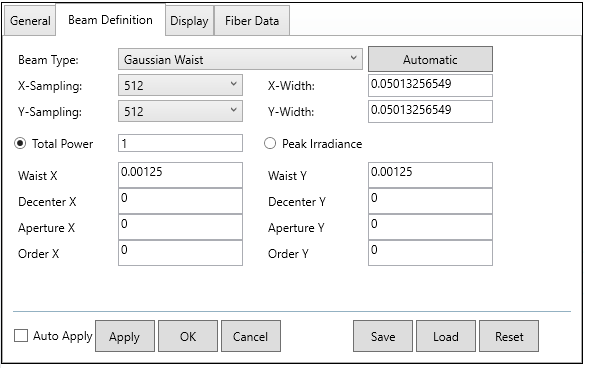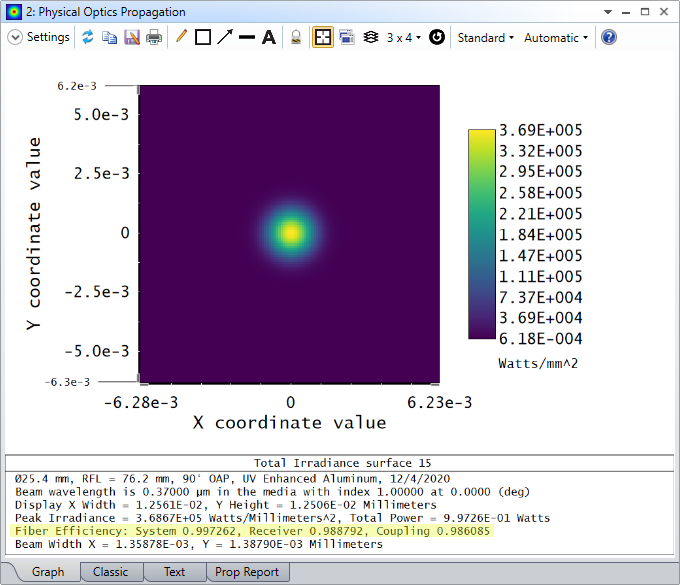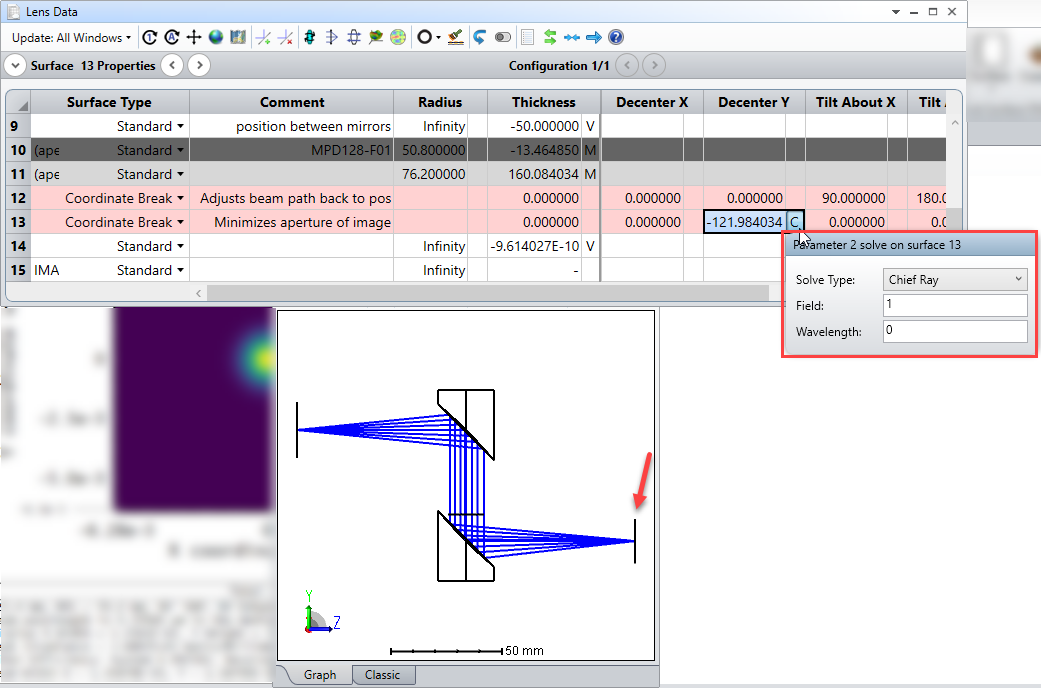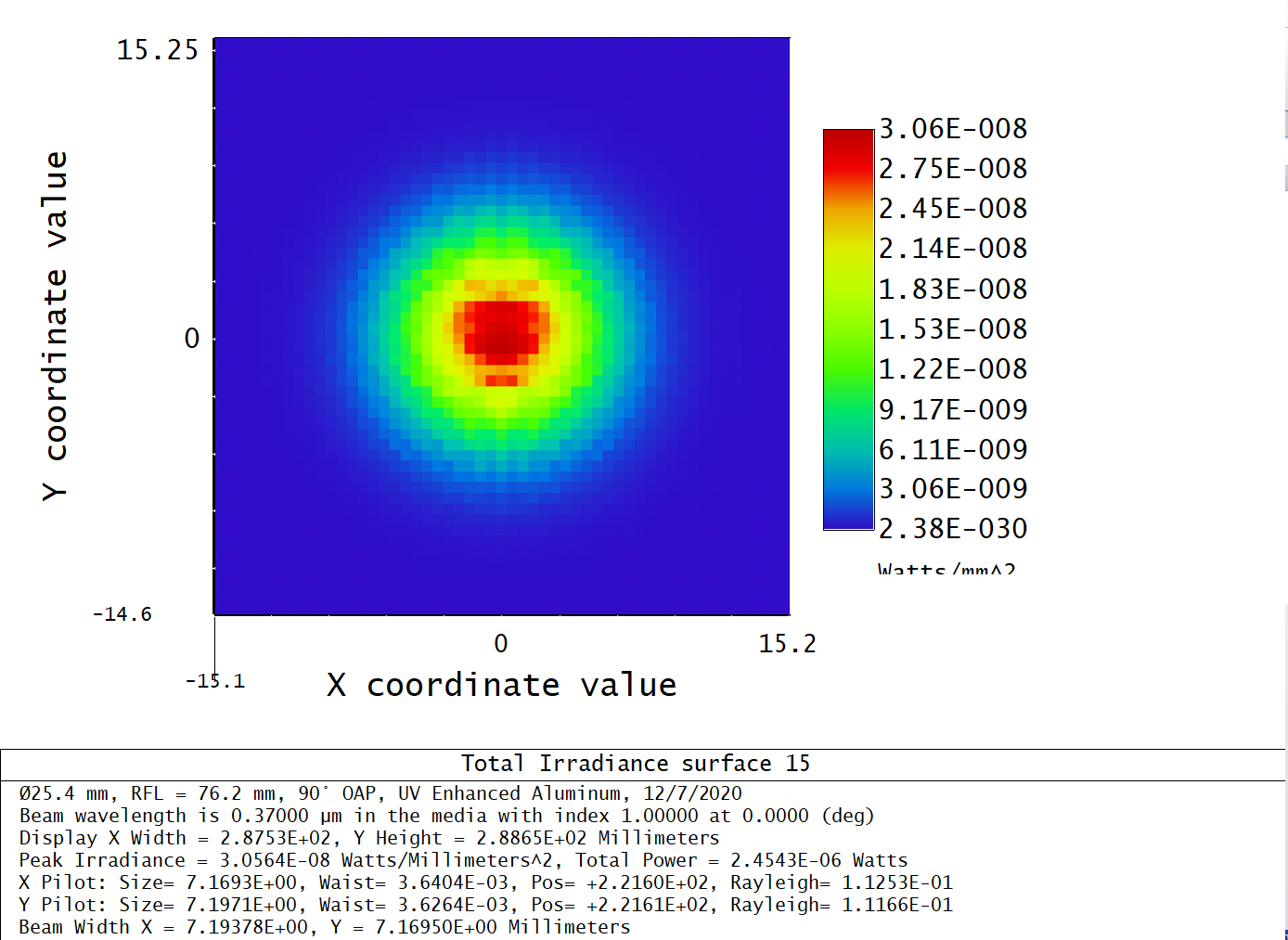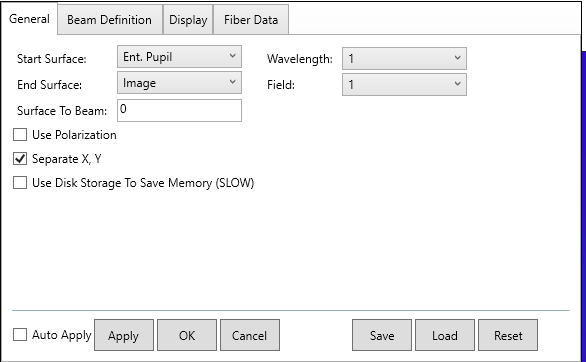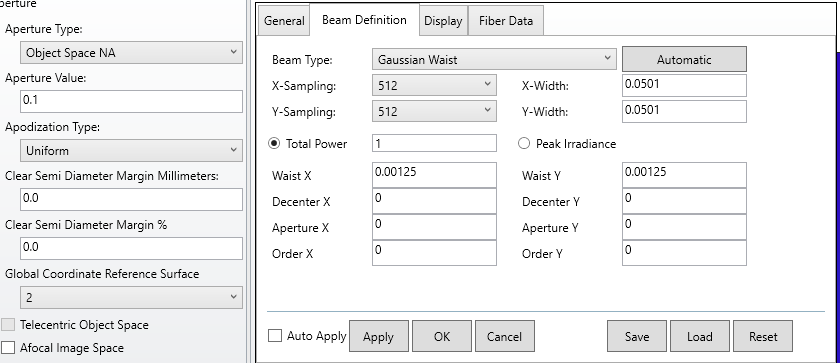Dear Zemax Team,
I would like to model and optimize an optical system that utilizes two parabolic mirrors.
The mirrors would be placed in such a way to create an approximate 1:1 imaging system from an optical fiber (mode size ~ 2.5 um). I would like to know the position tolerancing for the two mirrors in order to minimize the spherical and chromatic aberration of two colors, 370nm and 780 nm. Furthermore, it would be ideal if the system works with the Physical Optics Propagation tool to visualize the beam and to predict the expected fiber coupling efficiency.
I have been able to create the system such that it looks appropriate in the ray tracing system, but the optimization feature and the POP produce results that are quite unexpected. I expect this is attributed to user error as opposed to the 'real' results.
I have attached my working zemax file for reference.
Thank you for all your help!
Regards,
George


